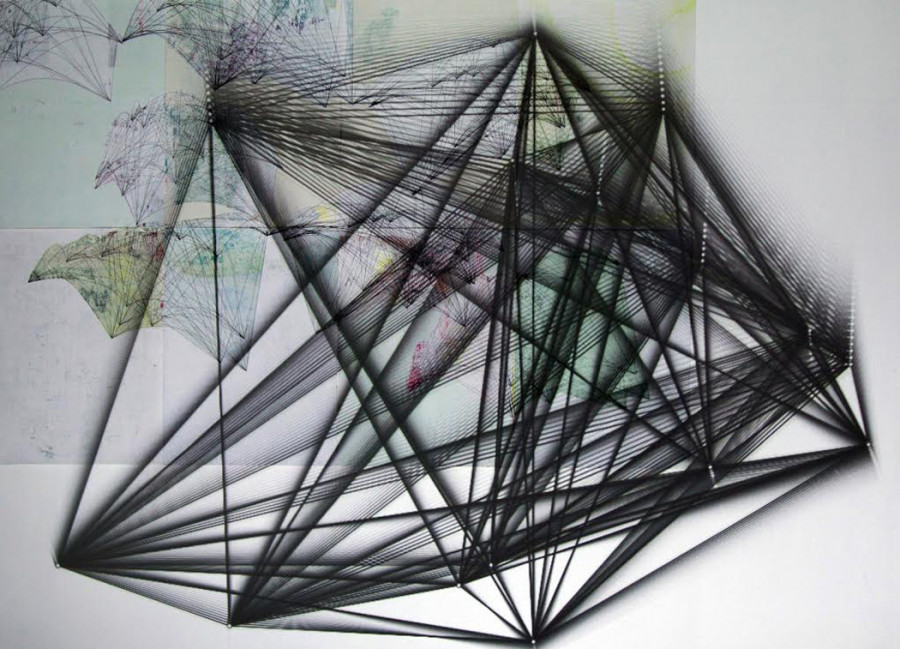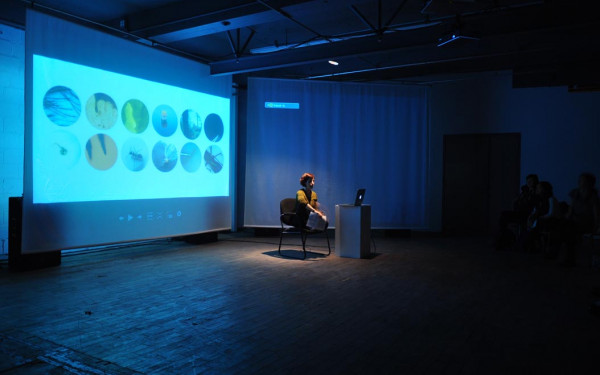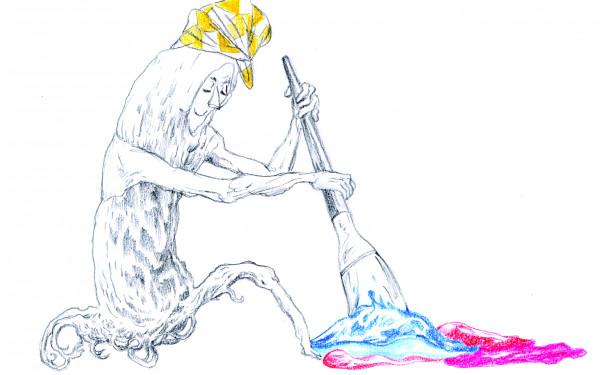Digital Trailblazing
Montreal Arts Centre Explores the Union of Drawing and Digital Media in ‘TrailMix’ Exhibition
As technology progresses, one might be tempted to wave goodbye to such age-old art forms as drawing or silk screening and label them outdated. But for one arts centre, a different idea emerged: why not just bring them into the 21st century?
On Jan. 16, Montreal art gallery Eastern Bloc will be doing exactly that in its latest exhibit TrailMix. Its featured works combine some of art’s oldest mediums with modern technology, often surprising showgoers.
“The audience reception, or the audience’s awareness of digital art is quite lacking,” said gallery co-founder Eliane Ellbogen. “There’s a lot of work that needs to be done in terms of educating larger audiences about how digital media and art are so closely linked and how these artistic practices are part of the larger contemporary art context.”
“Some people don’t even see digital art as being part of the contemporary art world, whether it’s commercial or non-commercial.”
But, as technology and art progress together, it seems perhaps people are going to have to start doing so.
“You have a lot of artists working on the Internet, incorporating networks into their art practice. Within the art world it’s hard to ignore contemporary net artists or any artist incorporating digital media because the disseminating of their work reaches a much larger audience,” Ellbogen said.
“It’s been a fact now for at least a decade. I think that for a larger audience to come to terms with that within the art world, there needs to be more and more exposure to those practices incorporating visual media.”
Something Old, Something New
Inaugurated in 2007 and operating out of the Mile End, Eastern Bloc is a niche artist-run exhibition and production centre with a specialization in digital and electronic arts, and audio and visual installations.
But despite its focus on new media, Eastern Bloc doesn’t see more traditional media, like drawing, as obsolete. The TrailMix exhibit is all about honouring the past by incorporating it into the future.
“What we were trying to achieve with the exhibit was to take more traditional practices, like drawing or silk screening, and to reinterpret them in a digital context,” Ellbogen said.
“In some cases it meant using the screen, in some cases it meant referring to a screen, in other cases it meant using the gallery as the screen—using the existing space as the visual basis for the work,” she explained.
“It’s an interesting intersection, especially in regards to TrailMix, between concept, technique, traditional practices and contemporary, technology-based practices.”
Concordia professor Alice Jarry, who produced the exhibit’s “_v2Récurrences” illustration with Montreal-based engineer Christian Pelletier, feels that traditional media are expanding past our original conceptions of them.
“For me, drawing is more about how you can leave a trace in space on the surface,” she said. “It’s more about the question of movement, trace and space all together. It can be so many things […]. To me, drawing can be a part of anything.”
As an artist who used to work primarily in printmaking and has now moved into newer media, Jarry constantly engages with the differences between digital and physical spaces. Her piece is an interactive experience, producing kinetic animations onto the installation based on the spectator’s movements.
“I think it’s a different type of architecture. I think your body reacts to it differently, but in the end they’re both physical,” Jarry said.
The piece combines her practice of screenprinting with the concept of the body’s relationship to different spaces.
“Screenprinting is a very mechanical medium and all the tools and apparatuses of printmaking make it very normalizing and mechanical,” she said. “It’s made in a way that pieces are supposed to look alike. But I’m never feeling the same when I print.
“My body gets tired, the pressure of my hands is different, the position of my body in space is different,” she continued.
“So [I wondered] how can I explore that whole idea of transient movement—movements of the body that are different—to create different kinds of images depending on how I react with the materials?”
Every Step You Take
While in Jarry’s interactive piece the implementation of technology is very apparent, for other artists it was used more behind the scenes.
In her piece “Transaction Trails,” Ontario native Andrea Campbell hopes to explore the place of technology in our daily lives, especially in those places we might not commonly think about.
“I started to become interested in surveillance practices, especially what was happening with the contemporary police archives, and this idea of surveillance assemblage,” she said.
“It’s all about tracing a person’s movement and habits, so through that I wanted to find a way to illustrate data and surveillance practices that are usually invisible.”
Campbell explained that when police track a person, they are not experiencing the actual person, but instead the representation of that person exposed through the technology used.
“I became really interested in seeing what kind of portrait it would create if I started making these artworks that were pieces of artifacts about a larger picture, a body viewed solely through data,” Campbell said.
In her work, Campbell tracked her daily movements through the receipts she acquired throughout the day, mapping them and creating a single image of various journeys.
“I like to think of it as an alternative way of viewing a body,” she said. “I want to show it as an extension of self but also as this idea of another way in contemporary society to view the body.”
Reinterpreting the Digital
Like many of the exhibits at Eastern Bloc, TrailMix is meant to stretch the minds of exhibit visitors and their conceptions of art.
“It will challenge audiences’ expectations of typical digital art. We’re really reinterpreting the idea of the screen and reinterpreting the role of drawing in contemporary art practices,” Ellbogen said.
“An audience familiar with contemporary art might feel challenged because they won’t necessarily agree with what we’re putting forward. On a conceptual or aesthetic level, the work itself is challenging in the sense that it’s dynamic, it will engage the senses and get [the audience] thinking about what they’re looking at.”
TrailMix // Jan. 16 to Feb. 16 // Eastern Bloc (7240 Clark St.) // Tuesday to Sunday 12 p.m. to 5 p.m. // Free admission



_600_832_s.png)

2__600_375_90_s_c1.jpg)


_600_375_90_s_c1.jpg)